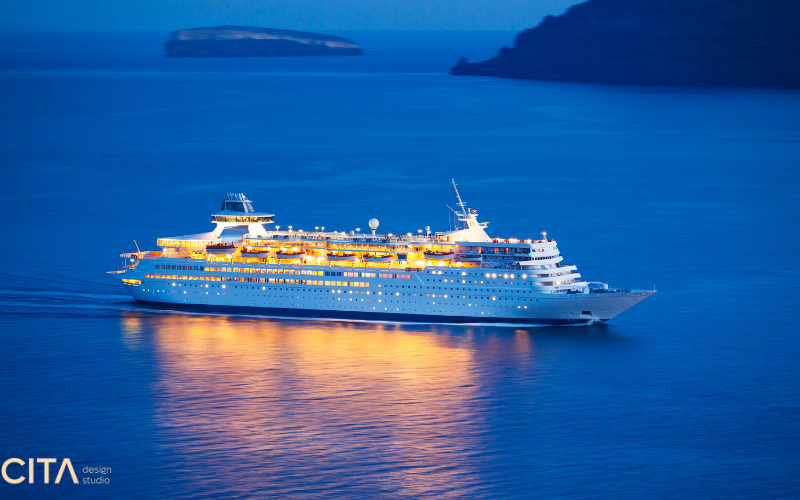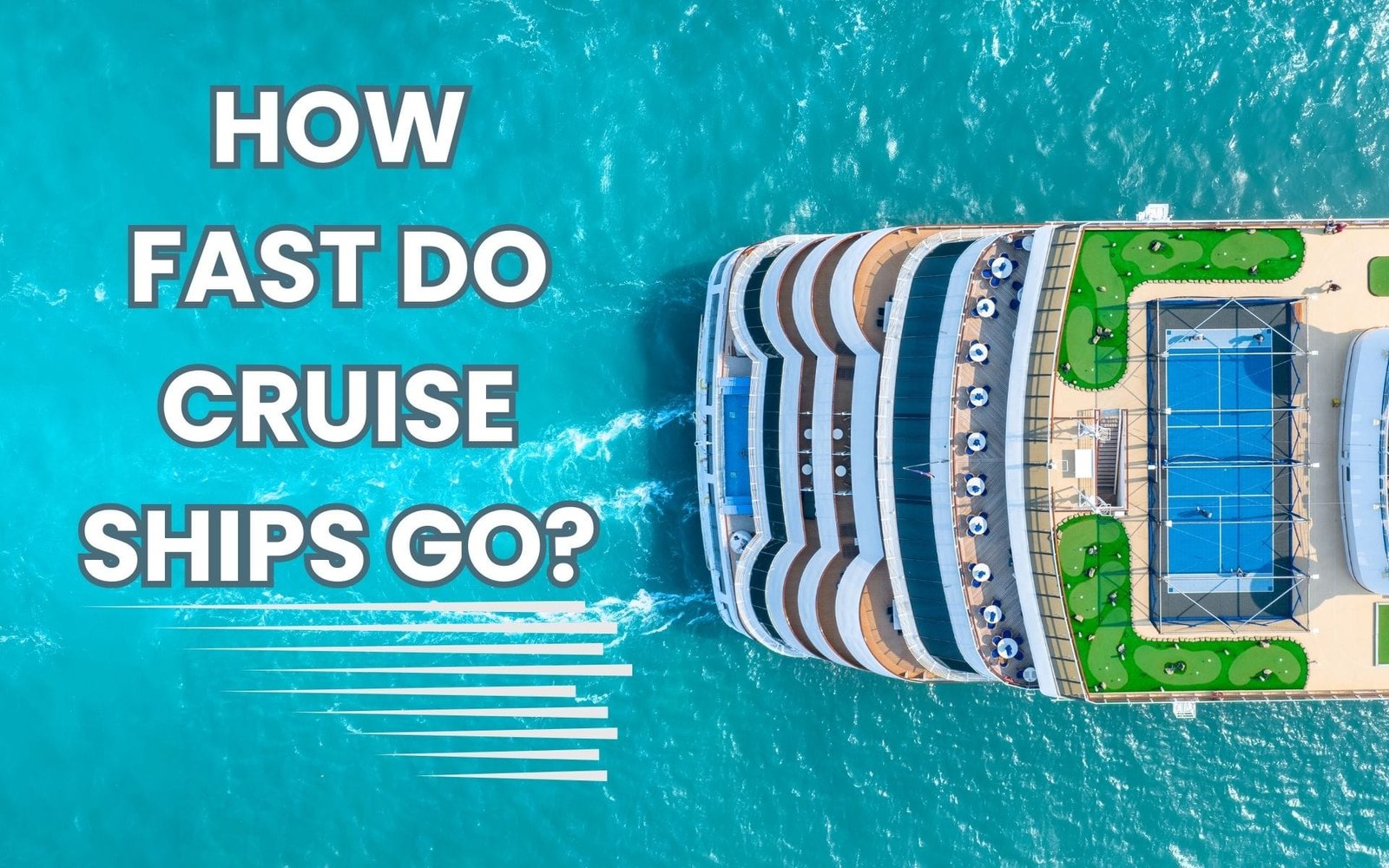Cruise ships, especially cruise ships, are designed to prioritize comfort and safety over speed. However, understanding the speeds at which these vessels travel can provide insight into travel durations, fuel efficiency, and the technology used in modern maritime travel. Here’s a breakdown of typical passenger ship speeds and factors that influence them.
You can visit DesingCita for aesthetic and inspiring examples of Cruise Ship Interior Design.

Average Speed of Cruise Ships
Most modern cruise ships travel at an average speed of 18 to 22 knots (around 20 to 25 miles per hour or 30 to 40 kilometers per hour). This speed allows for a smooth and comfortable journey for passengers, reducing the impact of waves and maximizing fuel efficiency.

Top Speed of Passenger Ships
While cruise ships can generally reach higher speeds, they rarely do so unless in cases of emergency or to make up time lost. The top speed for a large passenger ship can range from 25 to 30 knots (about 29 to 34 mph or 46 to 55 km/h). However, cruising at maximum speed consumes significantly more fuel, so it’s not commonly practiced.

Factors Influencing Cruise Ship Speed
Several factors affect the speed at which a passenger ship can safely and efficiently travel:
- Weather Conditions: Strong winds, waves, and currents can slow a ship down or, in some cases, speed it up.
- Fuel Efficiency: Cruise lines balance speed and fuel costs, often reducing speed to conserve fuel.
- Ship Design: The size, weight, and hull shape of a cruise ship affect its speed capabilities. Modern designs and advanced engines enhance both speed and fuel efficiency.
- Itinerary: Ships often adjust their speed to meet port schedules and ensure passengers have ample time to explore onshore.
 How Speed Impacts Travel Time
How Speed Impacts Travel Time
Cruise ships usually travel slower at night, which extends the journey time to give passengers time to enjoy onboard amenities. The average itinerary is designed to maximize passenger experience rather than minimize travel time, leading to a slower, more leisurely pace compared to commercial vessels.

Comparison to Other Ships
Compared to cargo and military vessels, passenger ships travel slower. Container ships and military vessels are built to achieve speeds of 25 to 40 knots or more, while cruise ships focus more on providing a smooth, leisurely travel experience.
Why Speed Matters for Passengers
While speed isn’t the primary concern for most cruise travelers, knowing the typical speeds helps in planning and understanding travel times between destinations. A moderate speed ensures a stable voyage, allowing passengers to fully enjoy their time on board.
Understanding cruise ship speeds provides a deeper appreciation for the balance between luxury, safety, and efficiency that cruise lines aim to maintain.


 How Speed Impacts Travel Time
How Speed Impacts Travel Time

